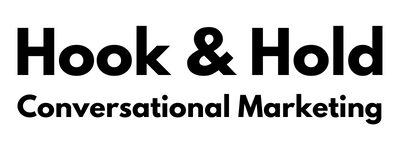Portfolio
Malin Svensson
Portfolio
Malin Svensson
What is conversation design? 💬
Conversation design is the practice of creating smooth-running conversations between a human and a computer, using text or voice. This includes defining user journeys, dialogue creation, testing, and handover to developers.
What I love about conversation design is being able to blend engaging UX, creative copywriting, and functional tech. To me, it’s important to quickly see tangible business results while delivering genuine value to the users.
My process
I’ve found that my process is ever-evolving, The process outlined below is a general overview. Some elements have a greater priority than others depending on each case. I typically use Google Sheets, Miro, Manychat, Dialogflow, and sometimes Intercom.
1. Define the objective of the chatbot
This is a workshop with the relevant stakeholders to understand key business goals. We discuss:
-
- The brand
- Technical requirements
- Understand the users and their goals
- Use cases
2. Create a bot Personality
- This is a workshop with the relevant stakeholders to understand and agree on the communication style of the bot. We discuss:
- Key characteristics of the bot
- Create style sheets to define communication style and tonality
At the end of steps one and two, I have a clear understanding of the brand messaging, the bot personality, as well as what use cases to design in the first design sprint.
3. Map out the flow
I define the happy paths throughout the conversation using a flowchart. This helps communication with stakeholders and team members since everyone has an overview of the scope of the chatbot.
4. Define intents
- Review existing data from the customer support center, emails, chat logs, etc.
- Define the most important intents users have when interacting with the bot
- Map out the exact phrases they use to express themselves
5. Dialogue creation and build
- Create dialogue sheets
- Write dialogues for the welcome message, the happy flow for the use cases previously defined, handover to live agent, local and global error handling, etc.
- I often test immediately after writing a dialogue, or only a part of a dialogue, to get a better understanding of the user experience. For example, if I have written a welcome message, I would set that up in my own chatbot testing environment to see how that message looks, reads and feels when expressed by a chatbot.
- If I’m the sole chatbot writer and builder in the project I build the chatbot flows and dialogues in the software we’ve agreed on, for example Manychat and Dialogflow.
6. Review
I present the solution to the stakeholders, get their feedback, and edit the copy if needed.
7. Testing
Testing the happy flows and error handling on my own, as well as letting the client test the solution. I often ask someone unfamiliar with the project to understand how well they navigate the chatbot conversation and interview them about their experience.
8. Launch & Optimize
After launch, I typically monitor the chatbot, run split tests, share reports with stakeholders and implement new use cases as necessary.
🤖 Chatbot Development
Take a look at some work examples of chatbots I have designed and built 👇
European Bartender School
Messenger chatbot for the world’s largest bartender school
US-based solar company
Messenger chatbot to qualify home owners considering installing solar power
MaliBot
Malin’s own chatbot
✍️ Copywriting
My experience includes chatbot conversations, email, and landing page copy. I’ve written emails for lead generation campaigns, promotions, welcome sequences, upsells, and abandoned cart recovery.
In each project, I dove deep into the world of the client’s customers to understand what specific beliefs they need to have in order to invest in a solution. This includes conducting customer interviews, belief mapping, and writing long-form copy to tell the client’s story. Clients include European Bartender School, CodeOp, Model Management, and Higher Ground Education.
💻 Coding bootcamp grad
Completed CodeOp’s Fullstack Development Program in April 2021. I learned the basics of Javascript, relational databases (MySQL) and API’. On team projects, we applied elements of the agile methodology Scrum and used Jira for task management.
One of my projects include the Air Health App. It allows users to get a measurement of the air quality of a specific location, as well as a forecast. I used React, JSON, HTML, CSS and World Air Quality Index Team’s API. You can access it on Github here.
👩💻 Personal
I’m somewhere in the middle of the introvert and extrovert spectrum. As a freelancer, I’m used to starting and running initiatives on my own and learning things as I go, but I also love teamwork and cheesy high-fives. I pay attention to details, research before I make a decision, and enjoy building systems and processes. When I’m not building chatbots you’ll find me in the gym or exploring the city with friends.
